Our eyelids are vital structures in maintaining ocular health and comfort. They protect the globes from foreign bodies and serve as protective barriers. Eyelids are also responsible for production of the oily layer of the tear film which prevents premature evaporation of tears, thus helping to ensure a healthy tear film is bathing the eyes. This tear film delivers essential nutrients to the surface of the eye and helps to clear debris and irritants.
Additionally, the eyelids help to direct the flow of tears across the eyes. However, the eyelids must be in proper position to ensure optimal function.
In the outer portion of each upper eyelid, you will find the lacrimal gland which produces the moist portion of the tear film. The tears wash across the surface of the globe and are directed towards the tear drainage system. With each blink cycle, the lids help to pump the tears into the tear drainage system. If the eyelids are not in proper alignment, the tears are not properly directed to exit the eye. Tears may pool and cause irritation and blurry vision.
The eyelids may become misaligned for a variety of reasons. Most commonly, they become lax over time and are unable to maintain their optimal position. It is most frequently seen as we mature, but can also occur in contact lens users or patients who frequently rub their eyes. Other causes of malposition include previous eyelid surgery (both cosmetic and functional) and post traumatic scarring.
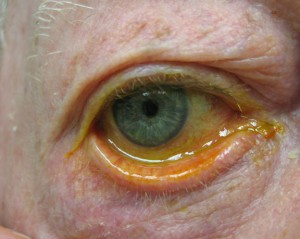
With senile ectropion, laxity of the eyelid may cause it to turn outward
Ectropion
When the lid margin is turned outward (directed away from the eye), ectropion occurs. Patients may notice that their eyelid looks red and irritated. Excessive tearing is also common as the opening to the tear drainage system is not in proper position. The inside of the eyelid is accustomed to a moist, sheltered environment. Ectropion alters this alignment, sometimes causing severe redness and pain. As the eyelid turns outward and the moist inner surface is exposed to the air, the eye becomes more uncomfortable. Ectropion affects the lower eyelid more commonly and may be caused by scarring of the skin, which causes external traction on the lid margin. In contrast, Bell’s palsy causes a neurogenic ectropion. Lack of facial nerve function leads to poor eyelid muscle tone and consequently laxity of the eyelid.
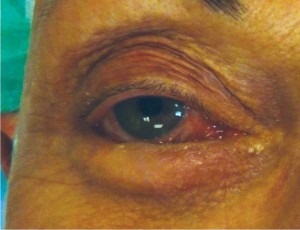
With spastic entropion, laxity of the eyelid and ocular irritation may create an inturning of the eyelid causing lashes to rub against the eye
Entropion
When the lid margin is turned inward, entropion occurs. Consequently, the eyelashes are directed towards the cornea and can abrade the eye with each blink. The cornea can decompensate with this repeated trauma, causing discomfort and foreign body sensation. The eye is often watery and red as well. As the irritation increases, the patient may blink more forcefully, thus causing further inward rotation of the margin. This cycle of irritation and further misalignment causes a condition called spastic entropion, and primarily affects the lower eyelid. Patients may find themselves using their fingertip to evert the lid margin and stop the lashes from coming into contact with the eye. Other causes of entropion include scarring of the inner surface of the eyelid (the conjunctiva) which may occur after previous surgery or trauma.
Treatment
Both ectropion and entropion are repaired with outpatient procedures. Proper alignment should be restored to ensure ocular health and, most importantly, to alleviate symptoms. Both conditions are usually addressed with a combination of procedures. In cases caused by eyelid laxity, sutures can be used to rotate the eyelids into the correct position. Additionally, most patients will need the outer corner of the eyelid tightened as well. In patients whose misalignment is caused by scarring, a graft may need to be placed to relieve tractional forces. Bell’s palsy patients may find relief with lid tightening alone. In general, most patients notice a decrease in symptoms soon after surgery and the results are typically long lasting. Care must be taken to maintain the restored position, and patients are advised to refrain from rubbing their eyelids.
There is a variety of conditions which may cause redness of the eyes, irritation and tearing. A thorough evaluation is the first step needed to identify the root cause and determine the best course of action.
Dr. Hui is the founder of The Eyelid Institute in Palm Desert. She is an Oculoplastic surgeon with a special interest in cosmetic/reconstructive eyelid surgery and anti-aging treatments. Dr. Hui can be reached at 760.610.2677.








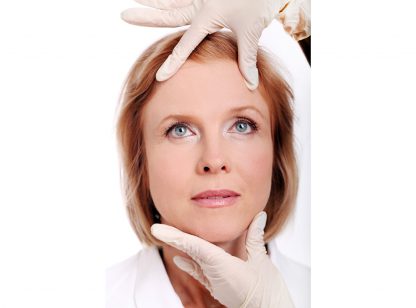


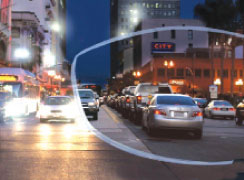
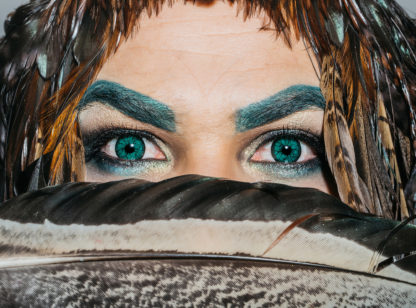
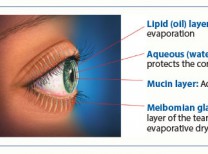




























Comments (1)
I use tweezers to remove my misaligned eyelids and then when when they grow again i managed so far but it is really painful